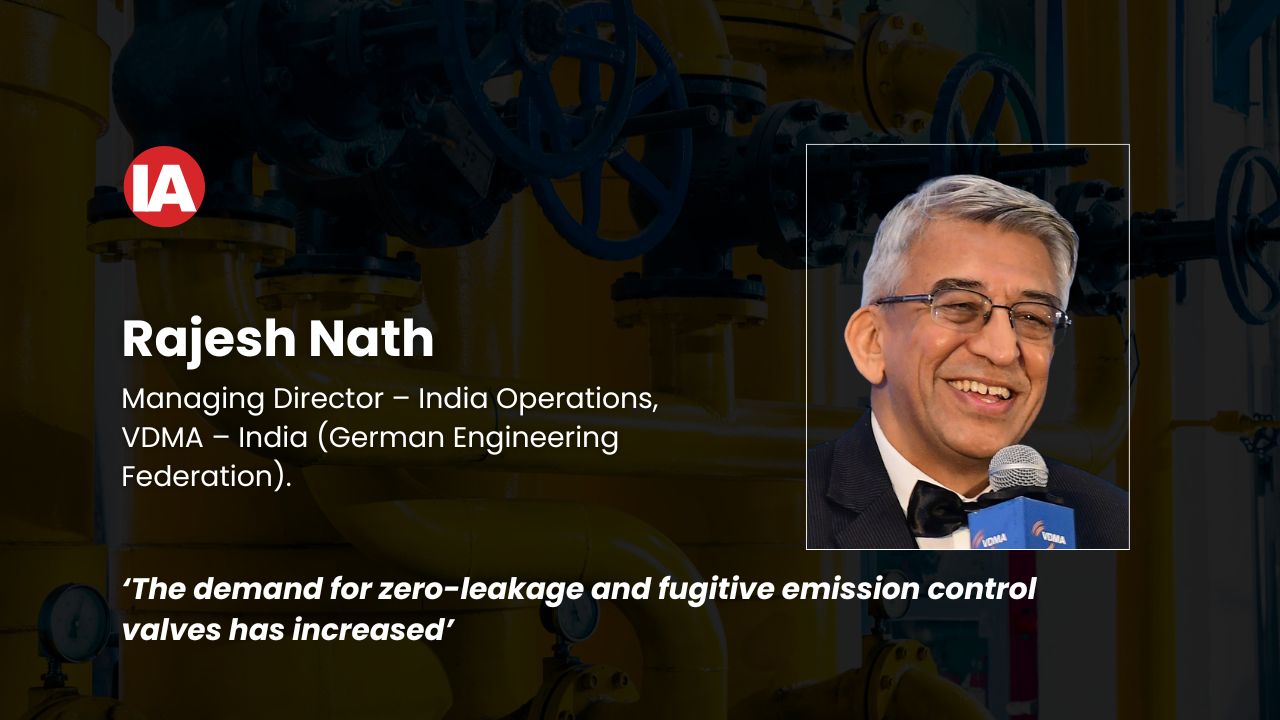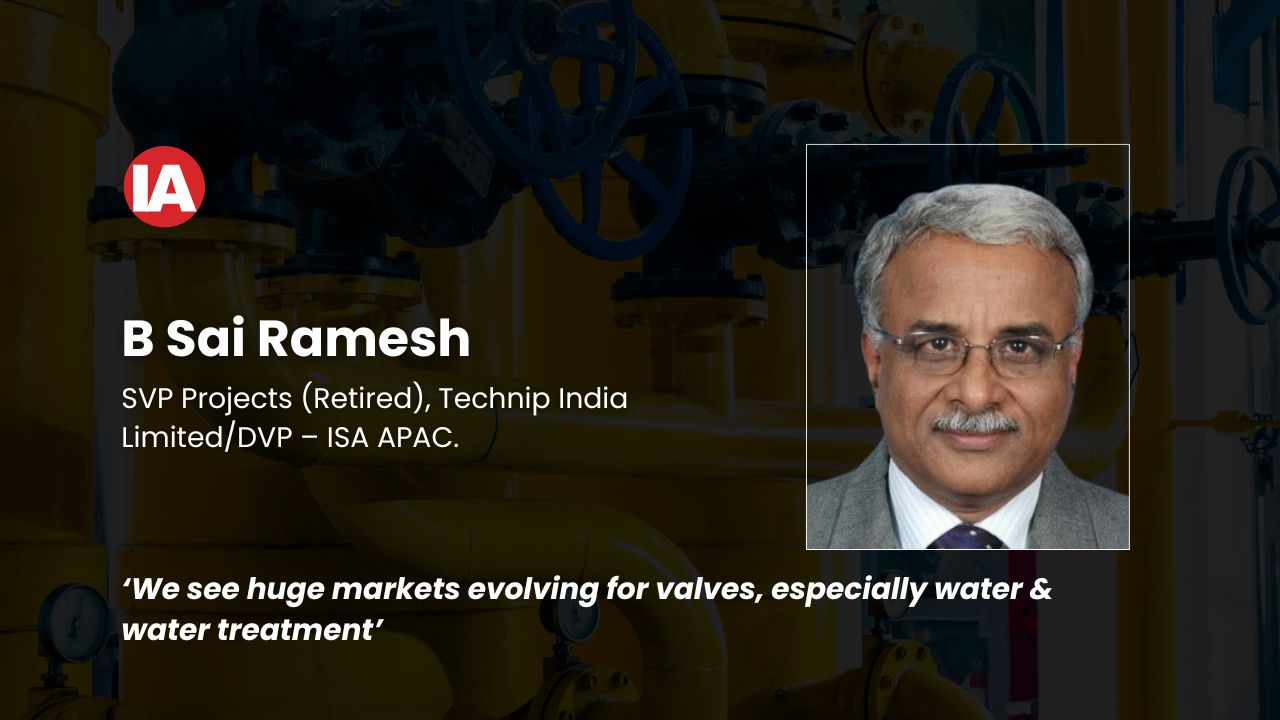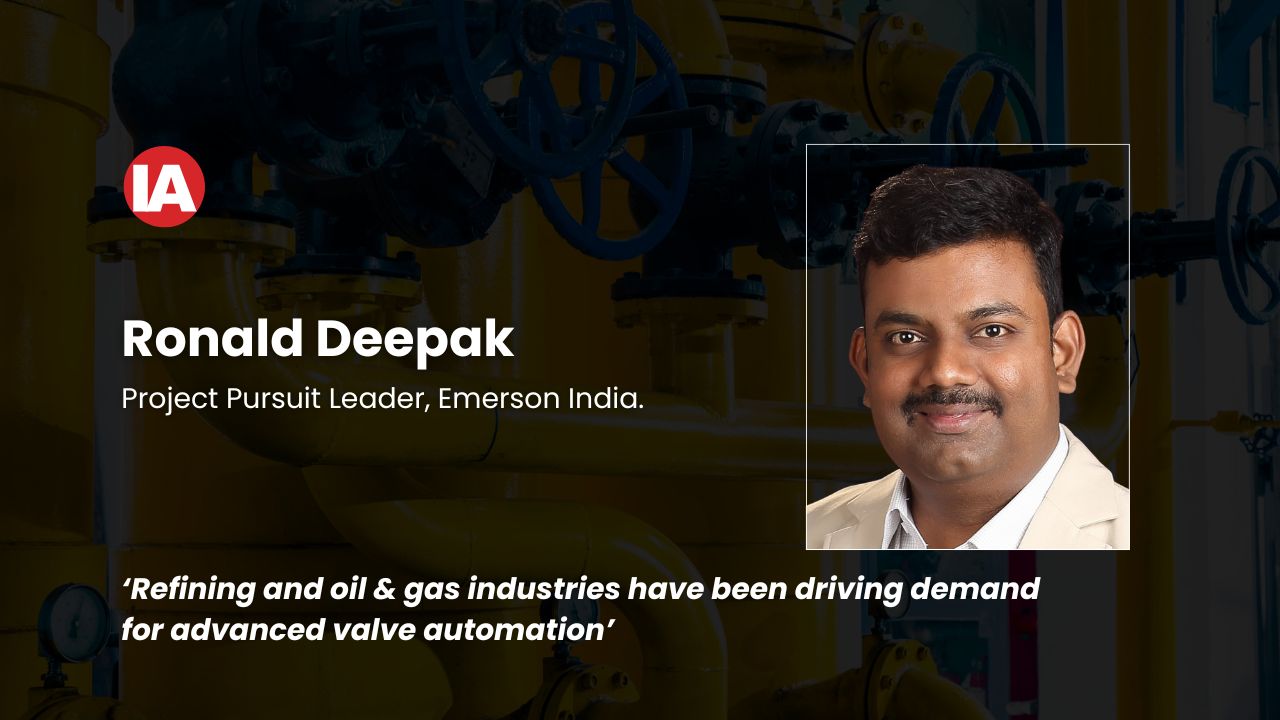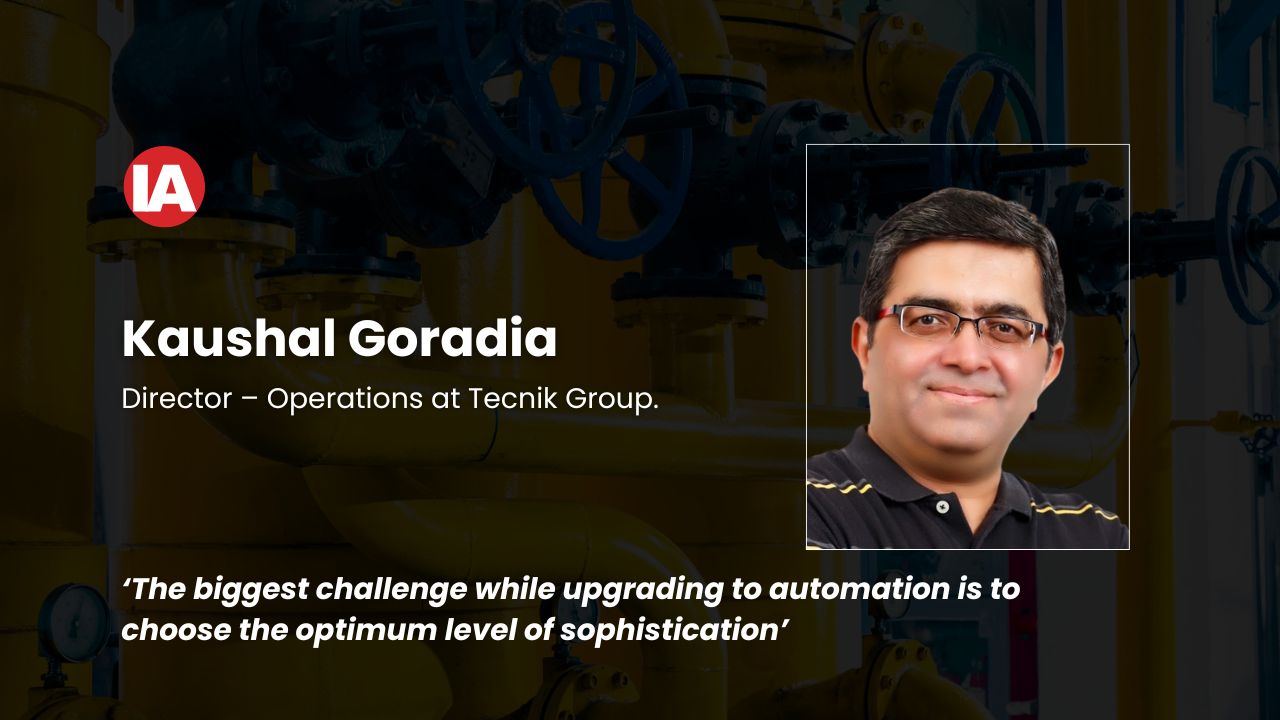Trends in Industrial Valve Design and Automation
The industrial valve industry has witnessed remarkable advancements in design and manufacturing, integrating smart automation, innovative materials, and IIoT-enabled monitoring. From ancient water regulation systems to modern high-performance valves, the evolution of valve technology has been driven by efficiency, sustainability, and reliability. As industries like oil & gas, water treatment, and chemical processing demand more precise flow control, the market for industrial valves is set for substantial growth, fueled by digitalization and environmental considerations.

The process of valve design and manufacturing has been transformed into a highly sophisticated operation.
Industrial valves – both in design and automation – have evolved over the centuries. Historical records indicate early use for valves for regulating water flow in Greek, Roman, Egyptian and other civilisations. But it was the Industrial Revolution in the 18th Century that started the trend of designing valves for various other applications. Today, the process of valve design and manufacturing has been transformed into a highly sophisticated operation with different materials and coatings, electronic controls and IIoT-enabled monitoring mechanisms. There is a huge market too. According to MarketsAndMarkets, it was valued at USD 95.58 billion in 2024, which is expected to rise to USD 121.67 billion by 2029, at a CAGR of 4.9%.
Valves are used to control the flow and pressure of liquids, gases, and slurries in various industrial applications. Oil & Gas, Chemicals & Petrochemicals are among the key industries using valves. The Water & Wastewater Treatment and Energy & Power industries are also among the other important users. In fact all process industries need valves in their operations – Offshore, Power Generation, Water works, Wastewater Treatment, Pipelines, Commercial buildings. Valves are getting better, smarter and energy efficient. What are the most significant innovations in industrial valve design over the past five years?

“Over the past five years, industrial valve design has undergone significant advancements, particularly with the integration of IoT-enabled smart valves. These valves, equipped with sensors and actuators, enable real-time monitoring and predictive maintenance, reducing downtime and improving efficiency. Reports indicate that factories have seen up to a 90% reduction in monitoring costs by adopting wireless IoT sensors,” says Rajesh Nath, Managing Director – India Operations, VDMA – India (German Engineering Federation). Material innovations have also played a key role. The use of corrosion-resistant alloys, ceramic coatings, and 3D-printed components has significantly enhanced valve durability and performance in harsh environments, extending operational life and reducing maintenance costs. Additionally, the shift towards electrically actuated valves over traditional pneumatic and hydraulic systems has led to improved energy efficiency and precise flow control. AI-driven automation further optimises valve performance, reducing human intervention. The demand for zero-leakage and fugitive emission control valves has increased due to stringent environmental regulations,” he adds.

B Sai Ramesh, SVP Projects (Retired), Technip India Limited/DVP – ISA APAC, opines that industrial valve design, especially post digitalisation, has been undergoing changes to meet the following needs:
- Optimisation in sizing
- Body design including internals
- Materials suitable for the service
- Meeting the sustainability requirements (emissions/environmental needs)
- Customised solutions including operational needs, and
- Communication & data sciences.
“Due to the various government schemes and policies, we see huge markets evolving, especially water & water treatment requirements to provide clean water to the people with reduced waste released to the environment. This has basically forced the valve industry to innovate their design to meet their sustainability goals. We have also seen Mega Capacity Plants (Oil & Gas, Petrochemicals, Chemicals, Fertilisers and Pharma) which also contributed to the design of large sized industrial valves with automation as the operations of the same are possible only by remote,” he explains.

Adding his perspective, Ronald Deepak, Project Pursuit Leader, Emerson India, feels one of the significant areas of innovation in control valves has been in SMART Positioner Technology. “Emerson has been at the forefront in this space with industry-leading technologies. The FIELDVUE DVC6200 is a powerful state-of-the-art SMART Positioner using linkage-less feedback mechanism. Using FIELDVUE Performance Diagnostics, valve operation can be monitored online to evaluate performance and reliability. This can eventually help process plants to predict failures upfront, prevent unplanned shutdowns, and perform predictive maintenance on control valves,” he avers.
Material selection is one of the important factors in the process of valve manufacturing, the criteria being type of fluid, the temperature and pressure, and the application. For example, a neoprene diaphragm valve is suitable for wastewater but not oil and gas. Some materials, like PTFE (Teflon), are resistant to high temperatures and pressures. Stainless steel is a good choice for high-temperature and high-pressure applications. How are material advancements (e.g., composite materials, coatings) and technologies like additive manufacturing influencing valve durability and performance?

“Advances in 3D printing are helping the valve industry at several levels, apart from the much spoken ability to 3D print complex trim pathways and critical overlays, including ceramic coatings, etc. A much wider but lesser acknowledged advantage is the ability to 3D print the valve patterns – toolings for valve castings. This helps with faster turnarounds; it thus addresses a very important bottleneck with valve manufacturing and that is the time taken for custom design to go from 3D models to actual finished product,” says Kaushal Goradia, Director – Operations at Tecnik Group. “A new but still evolving feature the new technologies (additive manufacture and ceramic coatings) offers now is to refurbish and make new and existing worn out parts – thus significantly extending the valve’s lifespan,” he adds.

Arun Prasath, Principal Consultant, Industrial Technologies, Frost & Sullivan, believes innovations in safety valve design aim to improve response times and reliability under extreme conditions, especially in industries like oil refining and power generation. “Modern safety valves are made with superior materials, accurate pressure-release mechanisms, and fail-safe features to prevent catastrophic system failures. Stainless steel control valves are preferred for industries with high corrosion resistance, like chemical processing and water treatment. Emerging trends in cryogenic, safety, and stainless-steel control valves reflect the industry's commitment to innovation, enhancing safety, efficiency, and global competitiveness,” he asserts.

“Material advancements and technologies like additive manufacturing are playing a significant role in enhancing the durability and performance of industrial valves,” says Sunil David, Digital Technology Consultant, and goes on to mention at length the innovations that are influencing valve design and functionality:
Composite Materials and High-Performance Alloys: Composites and high-performance alloys, such as titanium, nickel-based superalloys, and advanced ceramics, are increasingly used in valve construction. These materials offer superior resistance to corrosion, especially in harsh environments such as chemicals, high-temperature steam, and seawater. They are also wear resistant and facilitate lightweight design.
Coatings for Enhanced Protection: Valves are being coated with specialised materials such as Teflon, epoxy resins, and chrome or nickel plating. These coatings protect the valve surfaces from aggressive chemicals, water, and extreme temperatures, preventing rust and corrosion. Coatings significantly extend the lifespan of valves in industries like oil and gas, water treatment, and chemical processing. Some coatings make valves abrasion- and thermal-resistant.
Additive Manufacturing (3D Printing): This is one of the most significant developments in materials. Additive manufacturing allows for the creation of valve components with complex, optimised geometries that are difficult or impossible to achieve using traditional manufacturing methods. 3D printing can create intricate and lightweight structures for valve components, reducing the overall weight of valves without sacrificing strength or durability. With additive manufacturing, valve manufacturers can quickly prototype and test new designs, reducing lead times and accelerating the development of advanced valve technologies. Above all, additive manufacturing is more material-efficient compared to traditional methods, as it produces parts layer by layer without the need for extensive cutting or machining.
What are the major drivers of demand for industrial valves, especially for advanced valve automation? The industries primarily driving demand for valves include oil and gas, chemical processing, water treatment, power generation, pharmaceuticals, and manufacturing, as these sectors heavily rely on valves for fluid control and regulation within their production processes, particularly due to the need for reliable flow management in critical applications like extraction, refining, and distribution of various substances.
“The demand for advanced valve automation is driven by industries prioritising precise flow control, safety, and efficiency. Oil & gas remains the largest sector, with increasing exploration and production activities requiring automated valves that withstand high pressures and extreme conditions. Smart valves with real-time monitoring improve safety, reduce downtime, and cut maintenance costs, fueling steady market growth,” says Rajesh Nath, who also believes water and wastewater treatment is another key driver, as the need for efficient water distribution, desalination, and recycling grows. “Automated valves enable remote monitoring and precise flow adjustments, enhancing sustainability. Similarly, energy and power generation, including renewables, increasingly rely on advanced valves to optimise steam, gas, and fluid flow in power plants. The chemical processing industry also sees rising demand for corrosion-resistant automated valves to handle aggressive chemicals and extreme temperatures. With stricter environmental regulations and a strong push for automation, industries are investing in smart valve technologies to enhance performance, safety, and efficiency while meeting sustainability goals,” he elaborates.
B Sai Ramesh refers to his previous response where he mentions that water & waste water, and chemical & pharma industries are driving the demand for advanced valve automation. “We have also seen the oil & gas industry – especially FPSOs, well heads and gas separation plants – driving the demand for advanced valve automation in order to operate remotely as well as to ensure environmental safety,” he adds.
Ronald Deepak agrees that in the last few years, the refining and oil & gas industries have been driving the demand for advanced valve automation. “However, with India's increasing footprint in the Petrochemicals and Chemical manufacturing, these industries will be the growth drivers of the future,” he opines.
Energy efficiency and sustainability are significantly impacting valve manufacturing by driving the development of valve designs that minimise energy consumption, reduce material waste, and optimise fluid flow control, thereby contributing to a smaller environmental footprint across industries that utilise valves. How exactly are these twin factors influencing valve manufacturing and selection?
“Valve technology is advancing at a rapid pace to meet the growing demand for precision, efficiency, and safety in a variety of sectors, including oil and gas, chemical, and pharmaceuticals,” says Arun Prasath. “The industry is prioritising the enhancement of valve reliability and durability in response to the increasing pressure, temperature, and operational conditions. Environmental considerations are also crucial, with regulations requiring valve manufacturers to reduce emissions, and energy consumption, and ensure leak-proof operations,” he adds.
“Energy efficiency and sustainability are increasingly influencing valve manufacturing and selection, as industries focus on reducing energy consumption, minimising environmental impact, and adhering to stricter regulations,” says Sunil David. According to him, it is the following factors that are shaping the design, manufacturing, and selection of valves:
1. Energy efficiency in valve design and manufacturing
Reduced energy consumption through optimal flow control: Valves that provide precise control over fluid and gas flow can help optimise energy usage in industrial systems.
Smart Valves and Automation: The integration of smart technologies (such as sensors and IoT connectivity) into valves allows for real-time monitoring and control.
Energy-efficient actuators: Valves are increasingly being paired with energy-efficient actuators, including electric and pneumatic actuators that consume less energy.
Reduced friction and wear: Advances in materials science, such as using lubricated or coated valve components (e.g., Teflon, ceramics), reduce friction during operation, leading to less energy required to move valve components and reducing the overall wear and tear on valve parts.
2. Sustainability considerations in valve manufacturing
Use of sustainable materials: Valve manufacturers are increasingly turning to sustainable materials to reduce the environmental footprint of their products.
Reduced environmental impact of manufacturing processes: Manufacturers are adopting greener manufacturing practices to reduce energy consumption, water usage, and carbon emissions during the production of valves.
Eco-friendly coatings: Instead of traditional coatings that may contain toxic materials (such as lead or chrome), manufacturers are increasingly using eco-friendly alternatives.
Integrating AI into valve operations can significantly improve efficiency by enabling predictive maintenance, optimising valve control based on real-time data, reducing downtime through anomaly detection, enhancing safety by identifying potential issues early, and ultimately leading to cost savings through optimised operations and minimised maintenance needs. What exactly do domain experts have to say about this?
Rajesh Nath believes integrating AI and machine learning into valve operations offers significant benefits, improving efficiency, reliability, and predictive maintenance. One major advantage, according to him, is real-time monitoring and predictive analytics, which help industries anticipate valve failures before they occur. As example, he quotes the case of a leading oil & gas company that implemented AI-powered valve monitoring, reducing unplanned downtime by 40% and cutting maintenance costs. “AI-driven automation also improves precision in flow control, ensuring consistent operations in industries like chemical processing and power generation. In a large water treatment plant, AI-optimised valves helped reduce energy consumption by 25%, improving sustainability and cost savings,” he emphasises.
Another key benefit is remote operation and autonomous decision-making. In offshore drilling, AI-integrated smart valves allow for automatic pressure adjustments, improving safety and efficiency. AI-powered leak detection has also proven valuable in reducing fugitive emissions. A petrochemical company using AI-driven valve monitoring reduced hazardous gas leaks by over 90%, ensuring compliance with stringent environmental regulations.
“However, challenges remain. High initial costs and integration complexities can be barriers, especially for legacy systems. Many industries require extensive retrofitting, disrupting operations. AI-driven systems also rely on large volumes of data, making cybersecurity and data accuracy crucial. Despite these challenges, AI adoption in valve operations continues to grow, offering long-term cost savings, improved reliability, and enhanced sustainability,” sums up Rajesh.
“We have to split the key benefits and challenges of integrating AI and machine learning into valve operations into the following parts, says B Sai Ramesh., elaborating this aspect with the following explanation.
1. Valve manufacturing – In the process of valve manufacturing, today automation and robotics have a significant impact. Most of the processes like precision machining, assembly, and quality control are automated and controlled by advanced robotics, which results in consistency and reduced human error, besides improving productivity and worker safety in hazardous environments.
2. Valve automation in process industries – Progress in artificial intelligence (AI) will be pivotal in automating industrial valves in demanding environments like oil and gas production and power generation systems. AI and advanced valve connectivity through sensors and actuators present more opportunities for industries to streamline and automate fluid systems. These technological advances will increase the demand for industrial valves in different sectors in the coming years.
“As control valves operate in a wide range of process conditions across various industries such as Oil & Gas, Refining, Petrochemicals, Speciality chemicals, etc. Each application in these industries becomes unique in terms of not only the operating conditions (pressure, temperature, flow, etc.), but also in terms of how frequently the set-points in these loops vary. Therefore, the kind of data that can be acquired from the valve for diagnosis could be very different. A lot of time, effort and money is spent in doing preventive maintenance,” says Ronald Deepak. “On the other hand, AI could bring in a lot of insight and intelligence as to which valves actually require maintenance. This could save users a lot of time and effort in maintaining valves in their facility,” he maintains.
To sum up, what then are the most common challenges companies face when upgrading to automated valve systems?
“The biggest challenge faced by plants while upgrading to automation is to choose the optimum level of sophistication. Often, there is a mismatch, either by opting to go for the most ‘trending’ or the latest of the technologies, or conversely, selecting the cheapest available option. Either way is a potential trap. Another challenge is incoherence among the various devices and systems – this would usually happen when automation is adopted in a phased manner or on piecemeal basis. It is therefore ideal to employ an EPC to work around these pitfalls,” says Kaushal Goradia.
To Arun Prasath, automation in valve systems is improving industrial operations' accuracy and productivity by reducing human intervention. Modern sensor technologies are integrating automated control valves to maintain optimal flow rates, pressure, and temperature, reducing downtime and boosting operational performance. “Automatic valves, including electric, hydraulic, pneumatic, solenoid, and digital mechanisms, are gaining popularity in manufacturing plants for unmanned operations with precise flow modulation. They offer advanced preventive maintenance, eliminating the risk of frequent shutdowns. Leading valve manufacturers prioritise safety and dependability in valve-centric sectors, focusing on fail-safe systems, real-time monitoring, and improved diagnostics in future production,” he concludes.
Note: The responses of various experts featured in this story are their personal views and not necessarily of the companies or organisations they represent. The full interviews are hosted online at https://www.iedcommunications.com/interviews)
